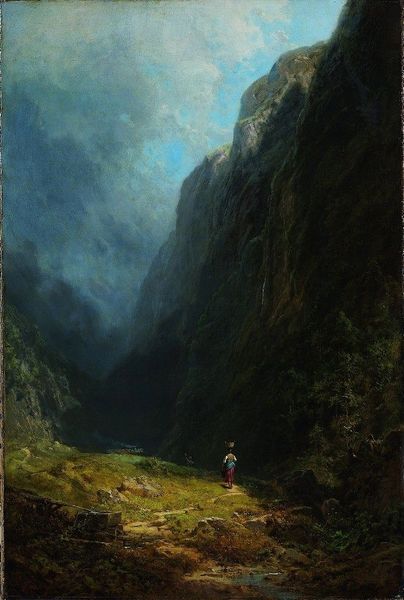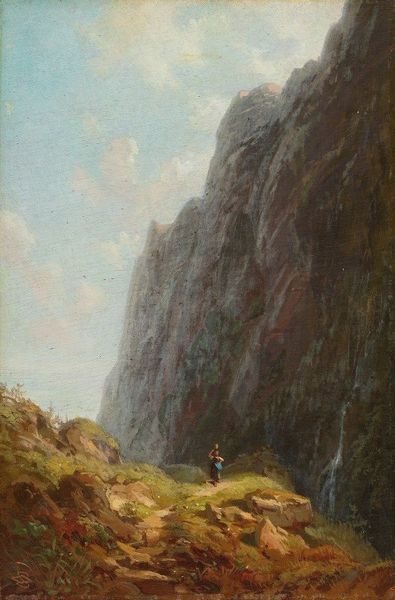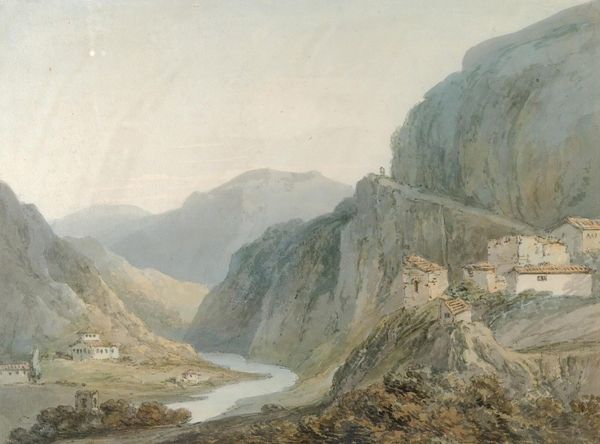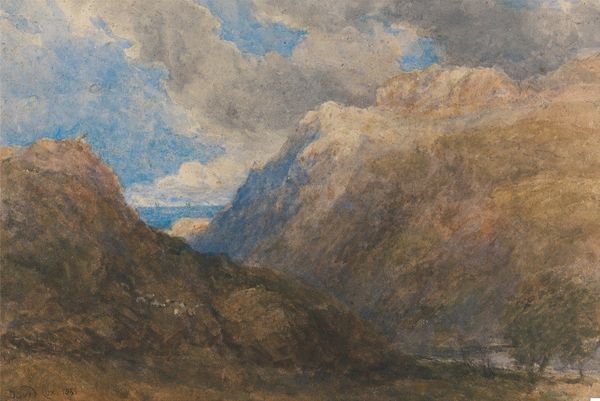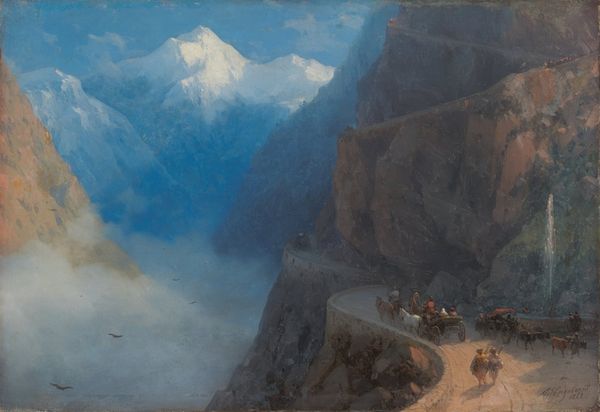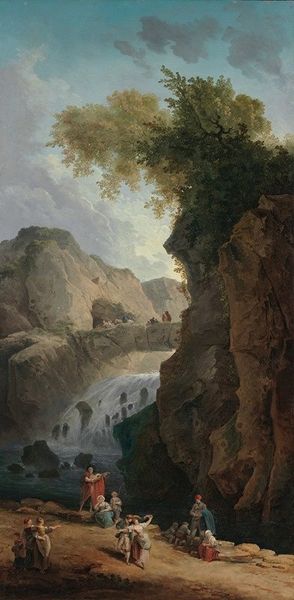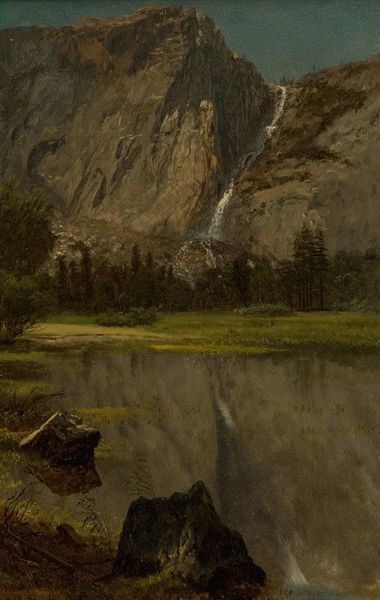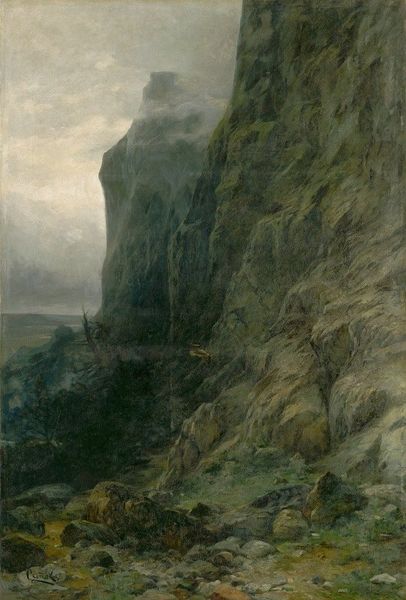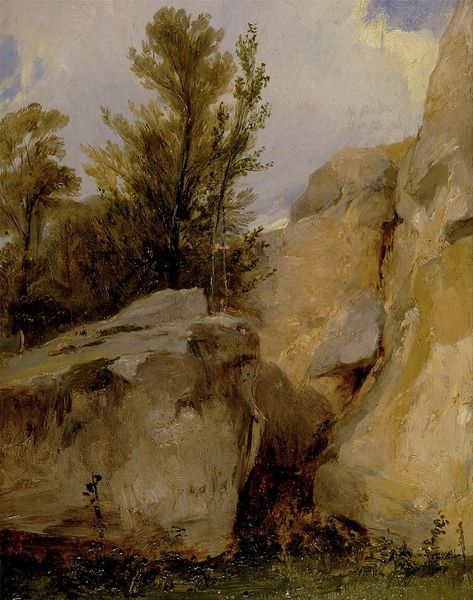
Copyright: Public Domain: Artvee
Curator: Welcome. Today, we’re looking at Ľudovít Čordák's “Záber zo Zádielskej doliny,” or “View from Zádielska Valley,” an oil painting believed to have been completed between 1894 and 1895. Editor: The overall feeling is somber. The towering rocks are imposing, almost threatening, in their scale and muted tones. A sublime yet intimidating landscape, wouldn’t you say? Curator: Indeed. Observe how Čordák utilizes visible brushstrokes to construct the rugged terrain. The contrast between the textured rock face and the softer, hazy sky adds depth, a certain spatial ambiguity. This exemplifies a post-impressionistic approach to landscape painting. Editor: The muted palette evokes the cultural climate of late 19th-century Slovakia under Austro-Hungarian rule. It’s tempting to read the painting as a visual metaphor for national identity – a powerful landscape, yet shrouded in shadow, indicative of political tensions of the period. Curator: An interesting interpretation! While sociopolitical contexts always resonate, let's also acknowledge the artist's command of composition. Notice the strategic placement of light and shadow, guiding the viewer's eye through the painting. The stark contrast between the sunlit areas and the shadowy depths creates a powerful sense of drama, purely on a formal level. Editor: Certainly. But Čordák was painting at a time when landscape art itself was often harnessed for nationalist projects. So, when looking at this piece, one can't dismiss how this representation of the Slovak landscape can be read as staking claim to territory and celebrating it's inherent strength and character in a challenging socio-political climate. Curator: A compelling point. It speaks to the complexities inherent within visual representation and the intersection between artistry and its contextual influences. Editor: Indeed, these rocky peaks speak volumes – literally and figuratively – about power and place, resistance and representation. It makes for a compelling glimpse into the cultural history of landscape. Curator: It's fascinating how examining form and context can offer such diverse interpretations. Editor: Precisely! A painting of striking ambiguity—one that provides rich, textured insights, not just into what it means to view landscape, but what landscape does when viewed through an historical lens.
Comments
No comments
Be the first to comment and join the conversation on the ultimate creative platform.
